The First Documented Automobile Railroad Crossing Accident in the USA as Reported in France in 1901
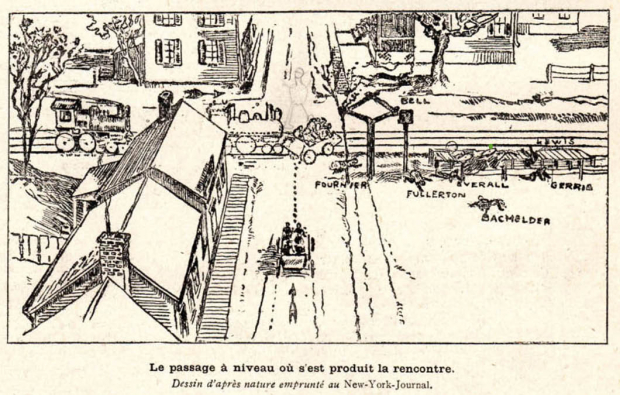
As a follow-up to last weekend's Mystery Foto, the amazing Ariejan Bos of Netherlands has discovered the December 1, 1901 issue of the French magazine La Vie au Grand Air which described Henri Fournier's encounter with a Long Island Rail Road locomotive. Ariejan has kindly translated the article. Ariejan, dank je!
Enjoy,
Howard Kroplick
Ariejan Bos:Today I also realized that Henri Fournier's accident would have been reported in the European press. So this is the result, an article from La Vie au Grand Air, dated December 1, 1901.
The article gives a detailed account of the accident, including a drawing of the location of all the injured men after the accident!! Of course Fournier was the hero (it was after all a French magazine). Here is my tanslation:
The Accident of Fournier
La Vie au Grand Air, December 1, 1901
Car accidents are not rare in Europe, especially not in France. The obstacles the unfortunate – and always guilty – drivers are exposed to on our routes are countless: horses, cows, dogs or pedestrians, even your own fellow motorists make up only an incomplete list.
But it is America, where everything is made big, that gives us the spectacle of a rendezvous between a car and a train. And it is a Frenchman, Fournier, the famous sportsman, who has been the unvoluntary hero of this adventure, which hasn't ended fatally owing to the intrepid behavior and the driving abilities of the French driver.
You will certainly remember the continuous lamenting the press has deluged us with this season regarding the car accidents. Cars always are the trains of the road, express trains driving with staggering speeds, even more dangerous than the real express trains, as they are not confined to the barriers of the rails.
The prototype of these road trains, or better of these express train-men, was Fournier, winner of the Paris-Bordeaux race at 85 km per hour, faster than the South-Express train, and of the Paris-Berlin race, faster than the North-Express train.
Well, fate has wanted Fournier to become the victim of a car accident, Fournier whom Simplicissimus [a German satirical magazine (AB)] had depicted spreading death and destruction.
_edited-1-1.jpg)
(Cover picture from Simplicissimus 1901 No.18. Translation of the caption: "Finally the French have succeeded in taking revenge for 1870.”)
And fate, always ingenious, has wanted that Fournier driving a car would collide with one of these locomotives which he was compared with, the collision being caused by the fact that he was not fast enough.
Incidentally, you can see by the accompanying drawings, that it was a rather serious clash and that it has not arisen the usual shouting and lamenting, which normally accompanies these accidents, was because:
1. A motor car was the victim;
2. It happened in America, where people shout less, but act more instead, and because Fournier simply asked without shouting $50,000 compensation from the train company, which is equal to 250,000 francs.
The small drawing clearly shows what happened. Fournier returned from a tour with 5 friends in a 10 HP Mors. He arrived at the railroad crossing, unguarded, as usual in America.
Since he didn't see a man with a red flag guarding the crossing, he continued driving; but at the same time, hidden by several houses, a locomotive arrived from the left, driving at a speed of 90 kms per hour (56 miles per hour). If he had been driving a racing car, Fournier would have accelerated and passed before the train. With his 10 HP machine this was impossible, as it was not that fast.
He was too latefor a stop. With admirable intrepidity, with the precision and with the reaction speed trained by the practice of racing, Fournier realized that there was only one decision possible, to turn before the other one was there. At the same moment, his foot touched the brake, he turned the steering wheel. The car responded, it hardly touched the rails and took a direction parallel to them. But, it needed a tenth of a second. One wheel was still left on the rails, when the locomotive arrived. The blow was enormous. The car was overturned at the side of the rails, reduced to pieces.
The five passengers were thrown out over various distances, as can be seen in our drawing, one of them over a distance of 16 metres (17 1/2 yards), which was our contributor Bachelder, a correspondent of Le Vie in New York. Mr. Fullerton, who had suffered the most serious injuries, was exactly one of the employees of the company, to which the colliding train belonged. Happily, all fractures appeared to be not too serious and some weeks in bed were sufficient for the most seriously hurt. Certainly within a few years, it will be difficult to convince the people that it was not Fournier who in the crash overturned and destroyed the locomotive. G.P.
_edited-1-1.jpg)
(1) In the drawing we give a view of the railroad crossing where the accident happened. In one of our issues of last year, in an article on American roads by our contributor Victor Breyer, we have published a photo of another crossing. On that one no guard or bell, as you will see on our drawing, but just a simple sign with the words: Stop, look, listen. Stop, look, listen, or … get crushed. Basically, that is the system of freedom, replacing the system of the patronizing government. It is a system that has good sides ... sometimes. N.D.L.R.
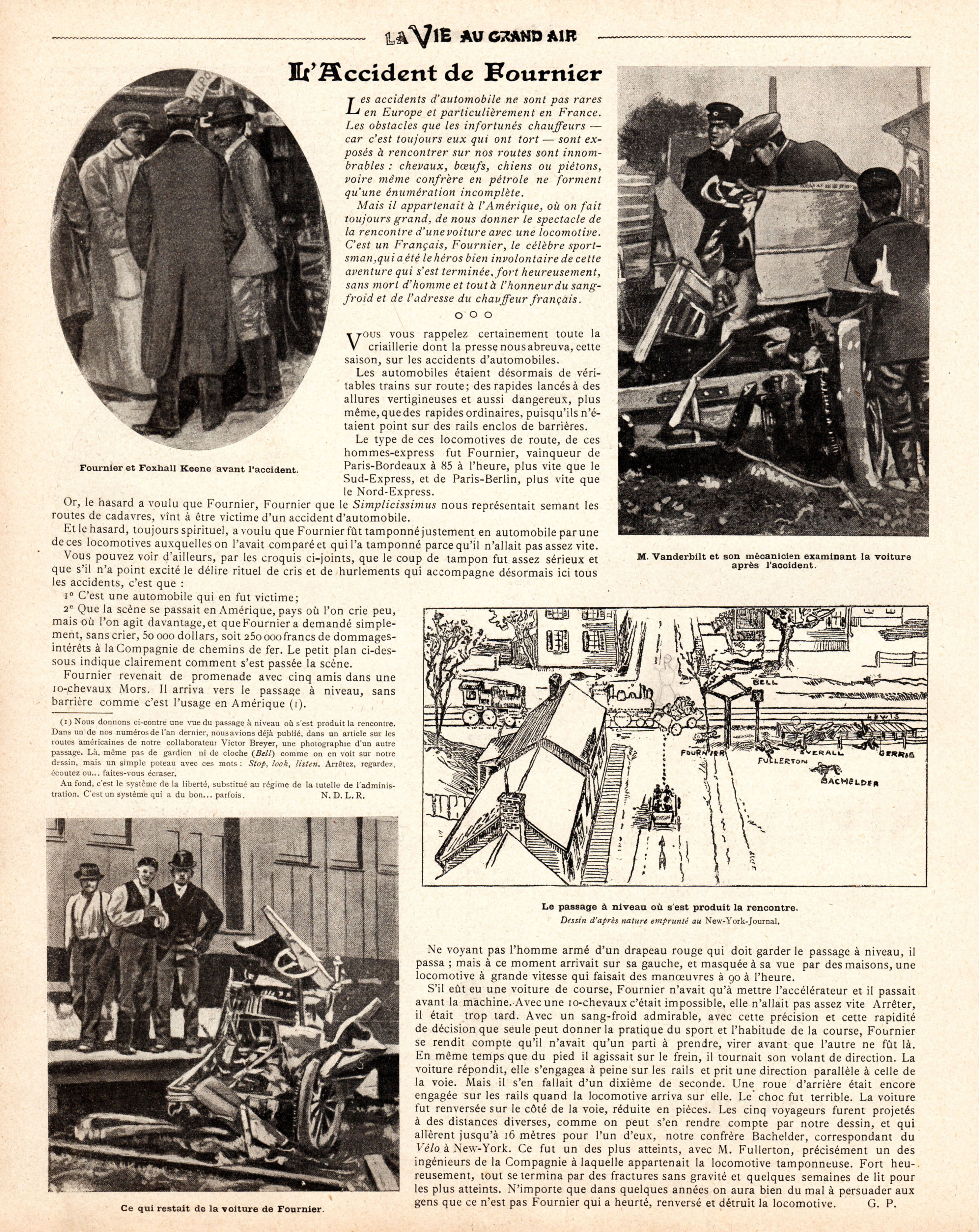
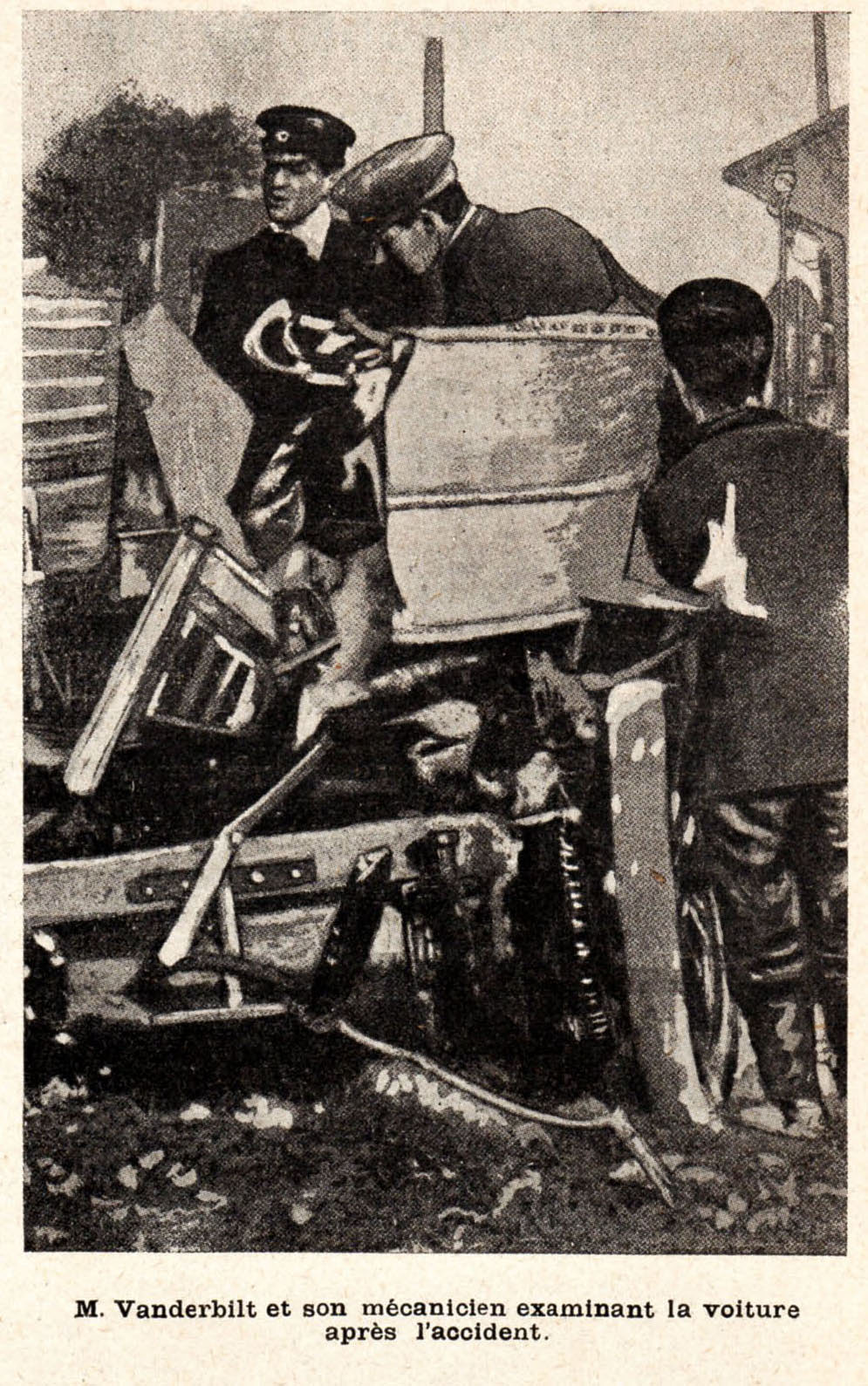
Mr. Vanderbilt and his mechanician examine the automobile after the accident.
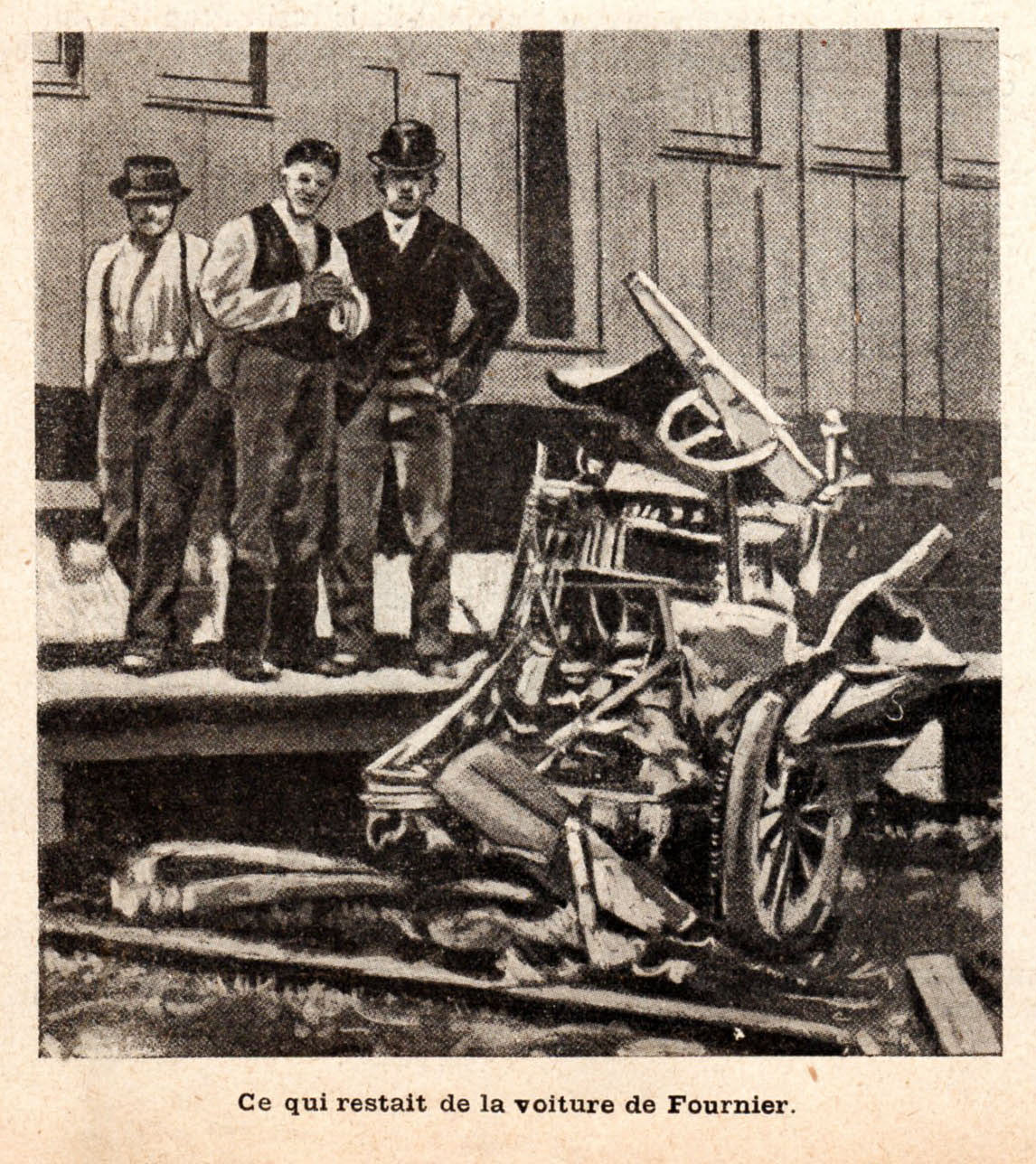
What was left of Fournier's car.
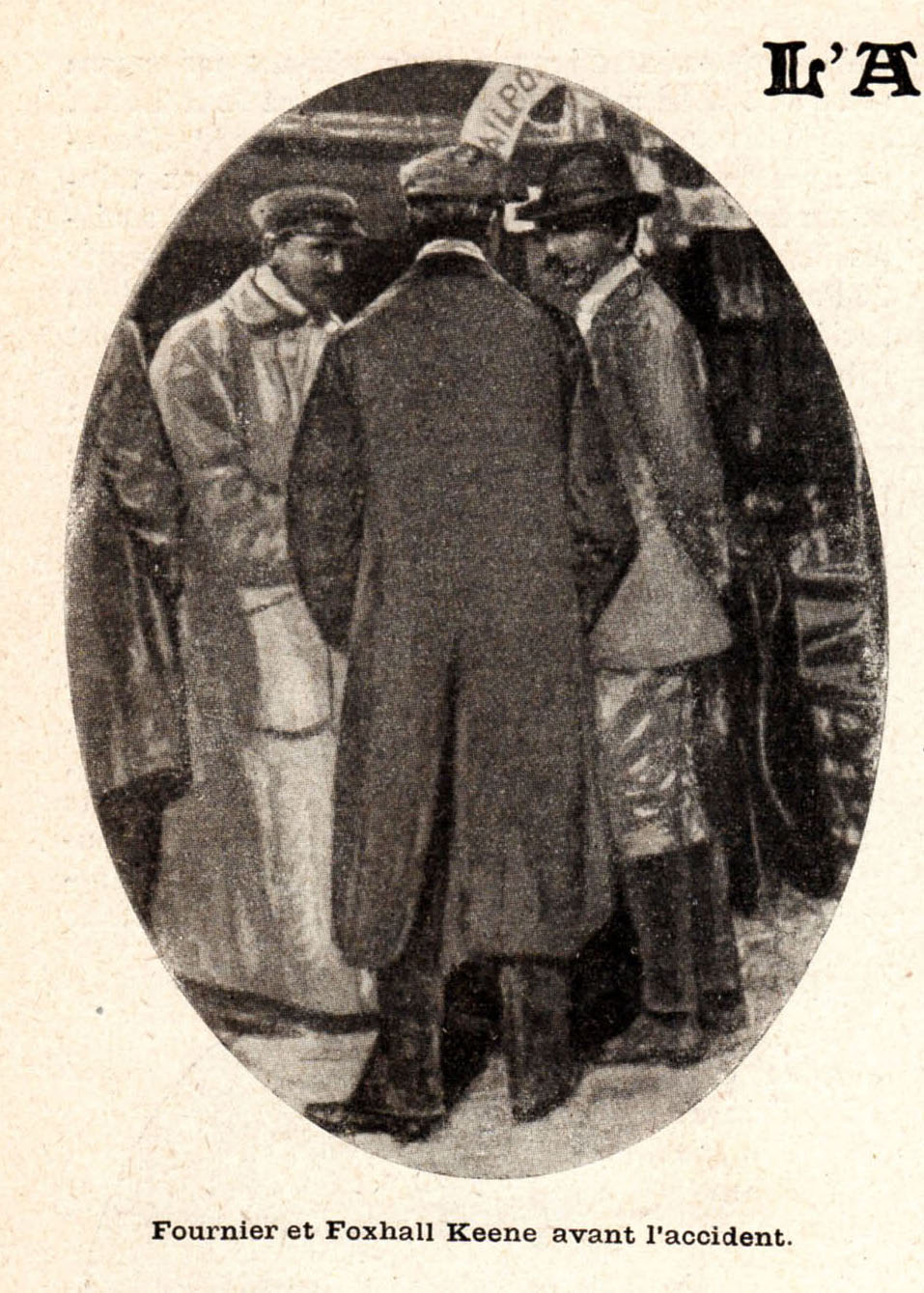
Fournier and Foxhall Keene before the accident.
Then (1901): Post Avenue in Westbury
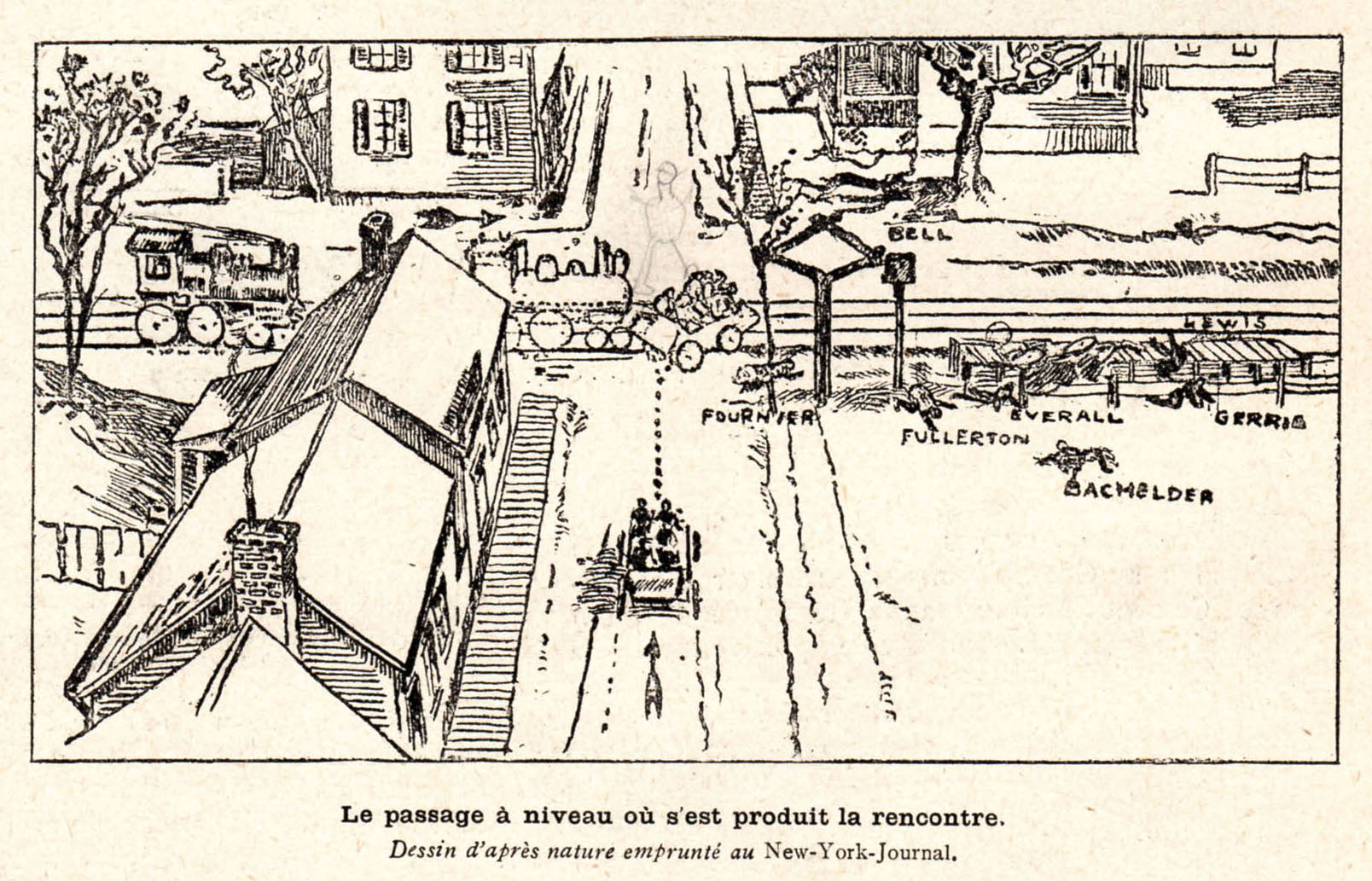
The level crossing where the encounter occurred.
Now (2016): Post Avenue in Westbury
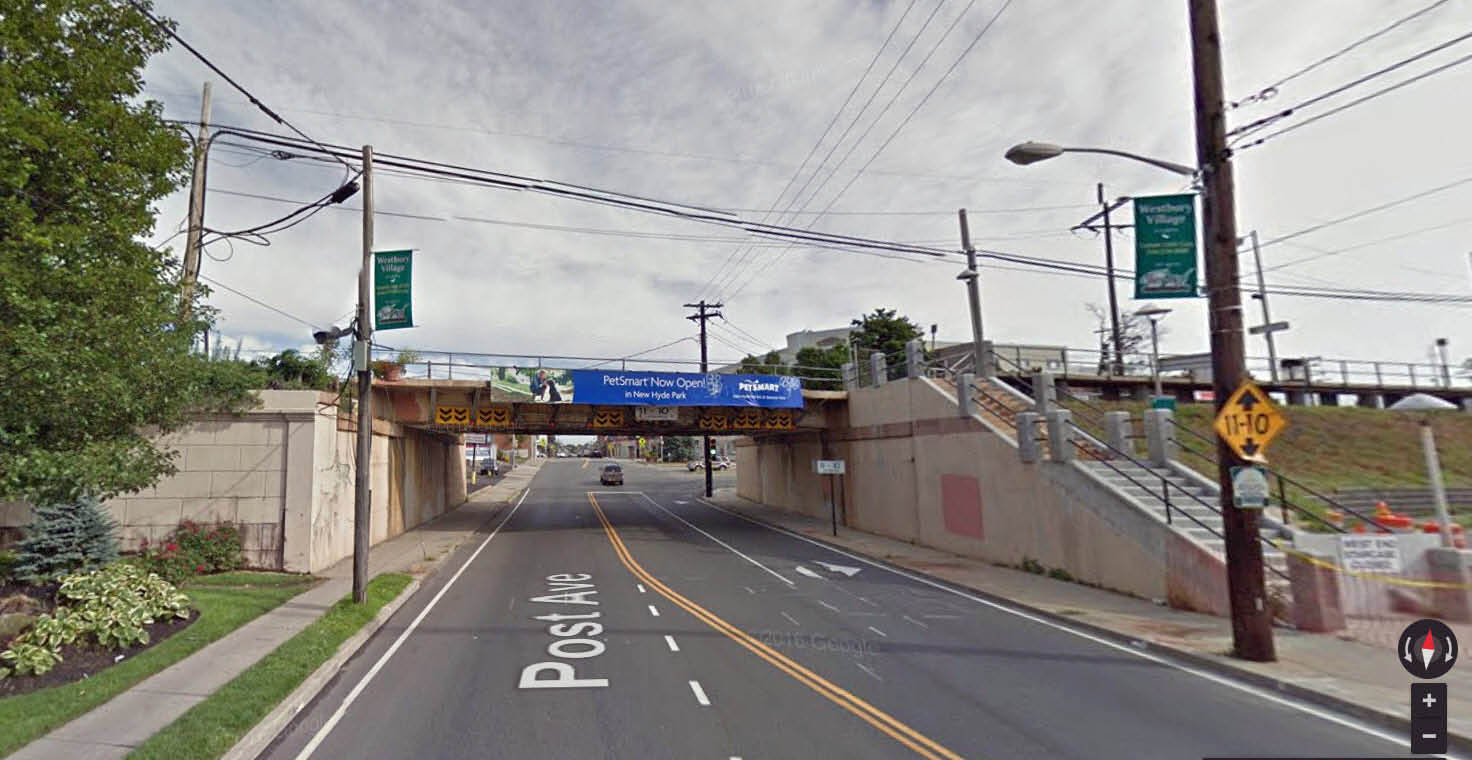


Comments
$50,000
A massive fortune in those days.
Quel cochon!